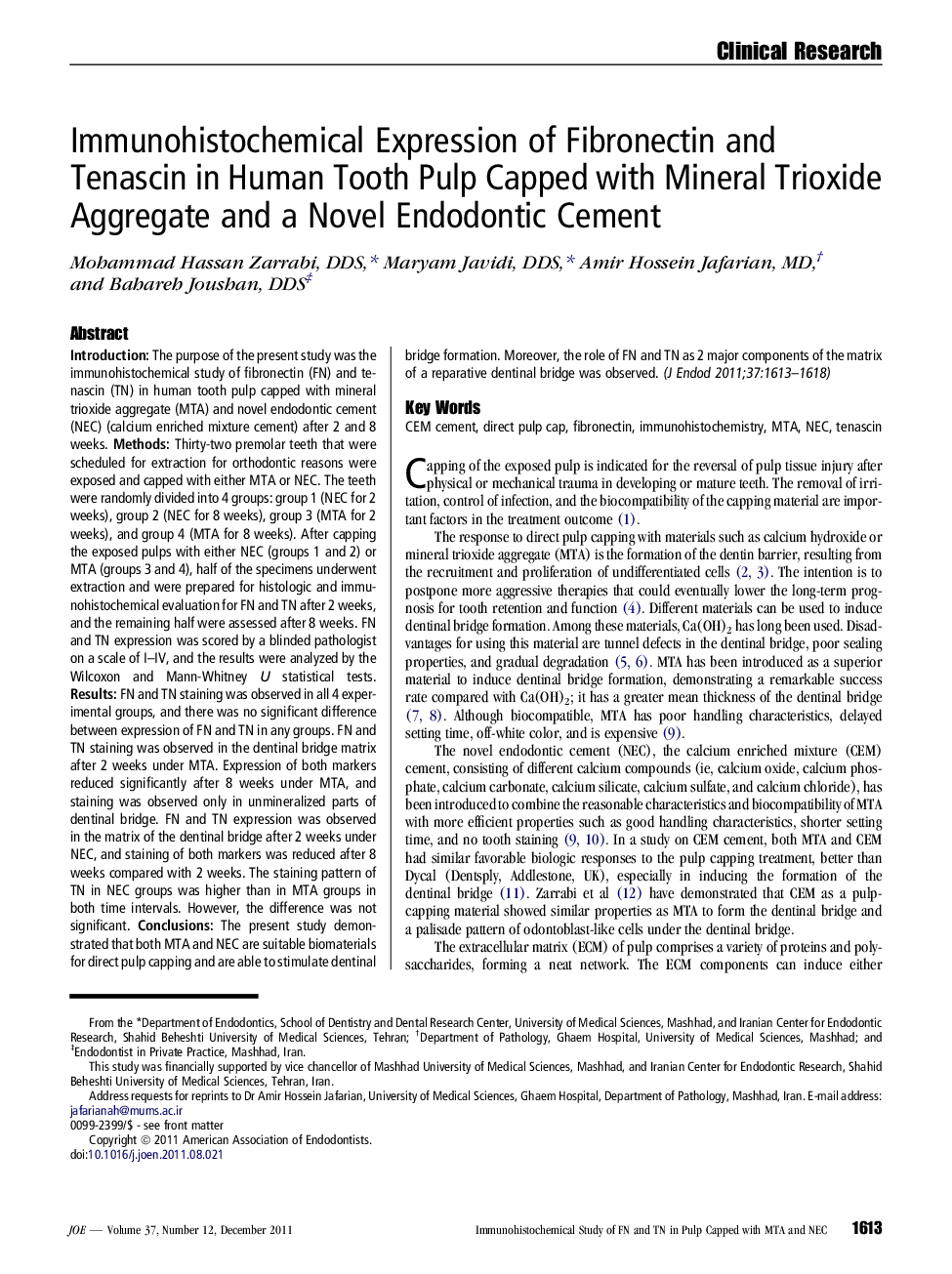| Article ID | Journal | Published Year | Pages | File Type |
|---|---|---|---|---|
| 3147519 | Journal of Endodontics | 2011 | 6 Pages |
IntroductionThe purpose of the present study was the immunohistochemical study of fibronectin (FN) and tenascin (TN) in human tooth pulp capped with mineral trioxide aggregate (MTA) and novel endodontic cement (NEC) (calcium enriched mixture cement) after 2 and 8 weeks.MethodsThirty-two premolar teeth that were scheduled for extraction for orthodontic reasons were exposed and capped with either MTA or NEC. The teeth were randomly divided into 4 groups: group 1 (NEC for 2 weeks), group 2 (NEC for 8 weeks), group 3 (MTA for 2 weeks), and group 4 (MTA for 8 weeks). After capping the exposed pulps with either NEC (groups 1 and 2) or MTA (groups 3 and 4), half of the specimens underwent extraction and were prepared for histologic and immunohistochemical evaluation for FN and TN after 2 weeks, and the remaining half were assessed after 8 weeks. FN and TN expression was scored by a blinded pathologist on a scale of I–IV, and the results were analyzed by the Wilcoxon and Mann-Whitney U statistical tests.ResultsFN and TN staining was observed in all 4 experimental groups, and there was no significant difference between expression of FN and TN in any groups. FN and TN staining was observed in the dentinal bridge matrix after 2 weeks under MTA. Expression of both markers reduced significantly after 8 weeks under MTA, and staining was observed only in unmineralized parts of dentinal bridge. FN and TN expression was observed in the matrix of the dentinal bridge after 2 weeks under NEC, and staining of both markers was reduced after 8 weeks compared with 2 weeks. The staining pattern of TN in NEC groups was higher than in MTA groups in both time intervals. However, the difference was not significant.ConclusionsThe present study demonstrated that both MTA and NEC are suitable biomaterials for direct pulp capping and are able to stimulate dentinal bridge formation. Moreover, the role of FN and TN as 2 major components of the matrix of a reparative dentinal bridge was observed.
